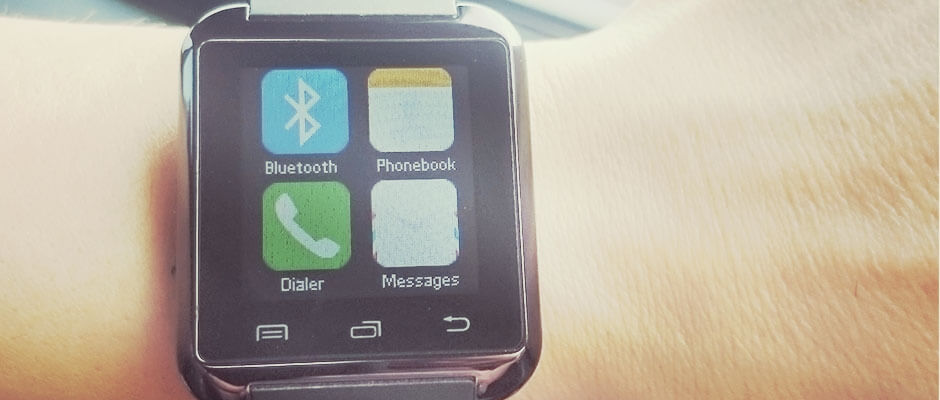Smartwatches are one of the latest innovations in personal technology and new watches are regularly appearing on the market.
Looking much like a regular watch, albeit with slightly larger faces on some models, many smartwatches double up as pedometers, so you can check how many calories you’ve burned, and search the internet, check the weather report, browse emails and messages. It’s a new and novel way to do what you have previously done on your smartphone, and it’s easy to understand the appeal. But what happens if you use your smartwatch while driving?
In March 2015 the Sunday Times and Transport Research Laboratory performed research on the distractions posed – from making a phone call using a hands free device, to texting, to making a phone call directly from a mobile, to using a smartwatch – while driving.
The research examined six scenarios in a driving simulator measuring hazard perception ability and drivers’ reactions to activities performed in a car while driving. It looked at how far a car will travel before the driver applies the brakes at 50mph, depending on the distraction. Of the six possible scenarios tested, using a smartwatch while driving was the second biggest distraction out of the six. Only checking social media on a phone came out higher, as the most distracting activity, but it was only marginally more distracting than using a smartwatch at the wheel. Under a normal driving scenario, not using any devices, a car would travel 20.4ft before the driver applied the brakes. When making a hands-free call, a car would travel 30.6ft before the driver applied the brakes. However, drivers using a smartwatch would travel a distance of 57ft before applying the brakes – almost three times the braking distance of a driver using no devices at all and almost twice the braking distance of someone making a hands-free call. In another test it took nearly three times longer (2.52 seconds) for a driver to react to a hazard while reading a message on a smartwatch than while talking to a passenger (0.90 seconds). Holding a conversation using a hands-free set saw a driver take an average of 1.35 seconds to react to a potential hazard. Any delay above two seconds was considered dangerous.

It isn’t immediately clear why smartwatches are more of a driver distraction than a mobile phone, but in my personal opinion there are some possible explanations. With smartwatches the screens are so small that some only fit four icons to a page, so you have to do a lot of scrolling – which takes longer than looking for something on a mobile phone with around 20 icons per screen – to find what you’re looking for. Additionally, the screen on a smartwatch is much smaller than a screen on a mobile phone so your visual focus is targeted at a very small area. These factors combined could lead to much higher distraction levels.
Equally, most smartwatches are designed to work alongside your mobile phone so if you haven’t paired the two devices and start playing around with these while you’re driving this would be hugely distracting.
Many smartwatches also alert you of incoming messages, calls and emails with a buzz to your wrist. The temptation to immediately check them may be too big for some drivers. Thanks to our insatiable desire to communicate, we are so used to immediately responding to messages and emails on our mobile phones that we are unlikely to change our communication habits just because we are using a smartwatch.
We can’t stop the technology train and I’m not sure we would want to, but we do have the choice to stop putting new distractions in our way while driving.
